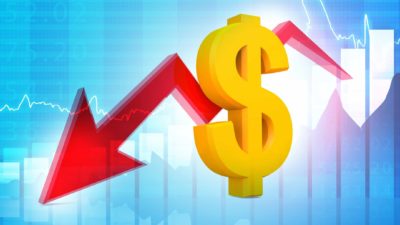It might seem old hat already, but no doubt the biggest piece of investing news (or just news) out this week was the decision by the Reserve Bank of Australia (RBA) to increase Australia's interest rates for the first time in 11 years. Naturally, much of the coverage of this decision has focused on the impacts higher rates will have on homeowners. As well as the broader property market. But higher rates have big implications for ASX shares too.
Tuesday's announcement took the cash rate from the record low of 0.1% to 0.35%. But even so, the RBA has made it clear that we should all expect more rate rises over the rest of the year. So let's check out how higher rates could make for some ASX winners and losers.
RBA raises cash rate for the first time in 11 years
So the first thing to keep in mind is that higher interest rates mean higher repayments on most loans (not just mortgages). So right off the bat, we can say that any company with a large debt load is potentially in the firing line here.
That view is backed up by our own chief investment officer Scott Phillips. Here's some of what Mr Phillips told news.com.au this week:
The companies who stand to lose the most are obviously those with a lot of debt whose interest bills will rise (probably meaningfully), hurting margins, profitability and therefore share prices. In a worst-case scenario, some might even collapse under the weight of suddenly more expensive debt.
But it's not just those companies with large debts that could be in strife under a higher-rate world. Phillips added the following:
Second, companies with little-to-no pricing power will also find themselves in a challenging environment… Third, if interest rates do bite, discretionary economic activity will likely be somewhat curtailed and businesses falling into this category will likely see less demand – although this will vary dramatically depending on the nature of the business.
Something to keep in mind when looking at how your own portfolio might fare under higher interest rates. But what of the winning ASX shares?
Which ASX shares will win from higher rates?
Phillips identified one popular sector as a potential winner: ASX banks. He told the report that "banks might do well if they can use higher rates to fatten their margins". He also said that "insurers who invest their premiums in cash and bonds will get a higher return on that money" when interest rates rise.
This was backed up by AMP Ltd (ASX: AMP) chief economist Shane Oliver. Mr Oliver told the report the following:
On the whole, banks are also going to feel positive effects from the change — provided all their customers aren't financially ruined… It's more positive than negative for banks, if people default on their loans then it's bad, it could become a negative if there's lots of defaults. But the RBA is not going to raise interest rates to a point of collapse [for people].








